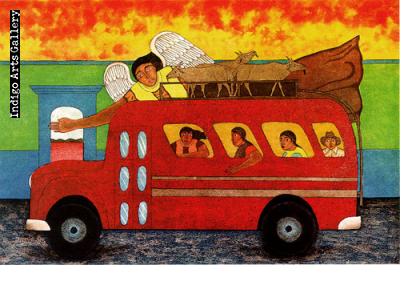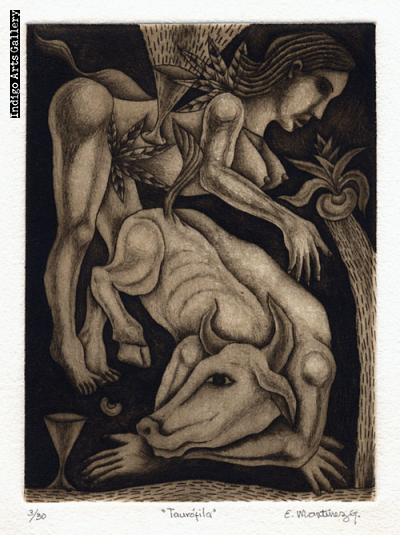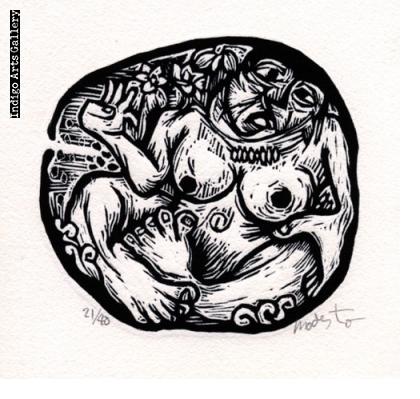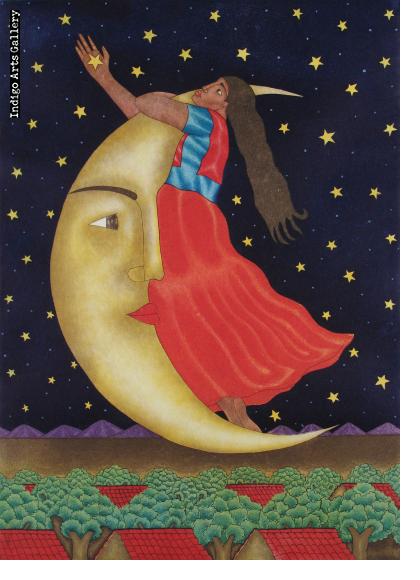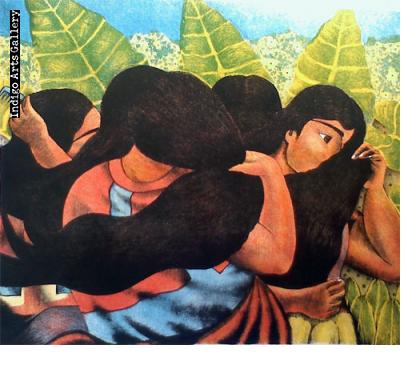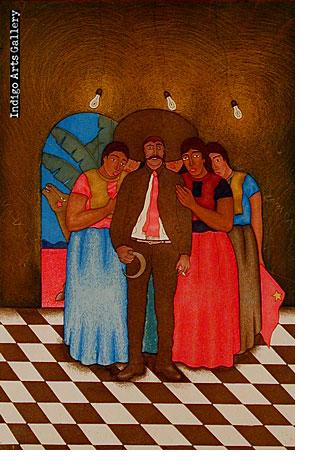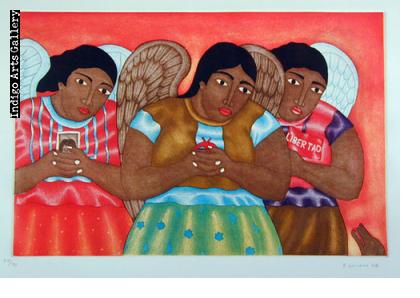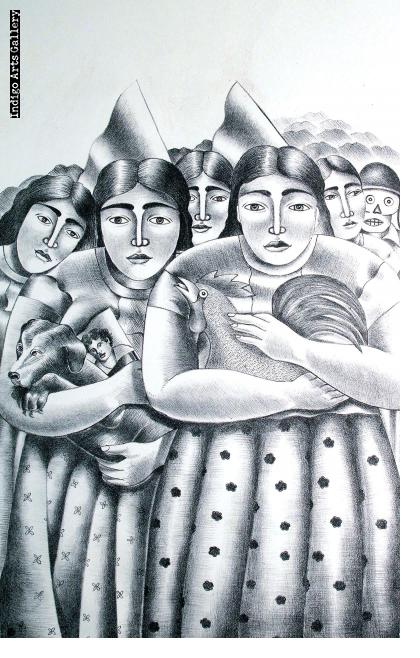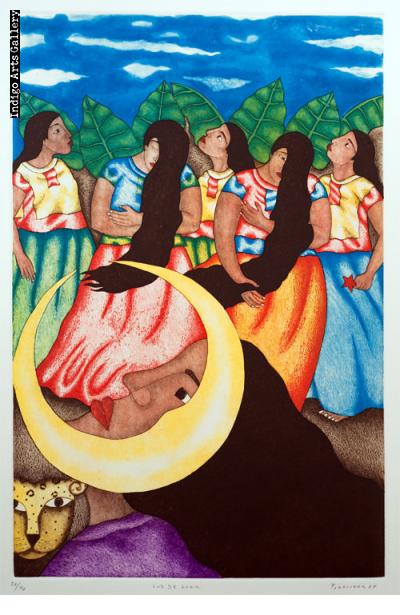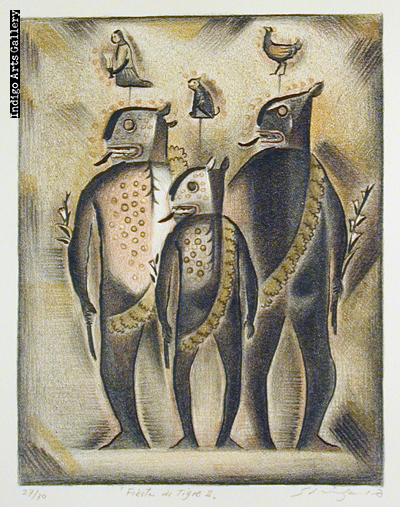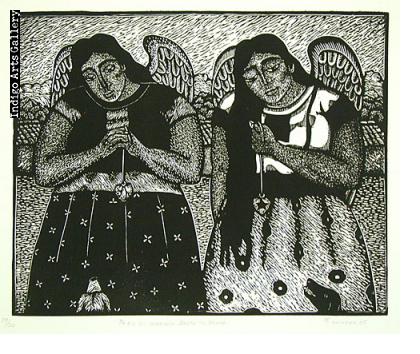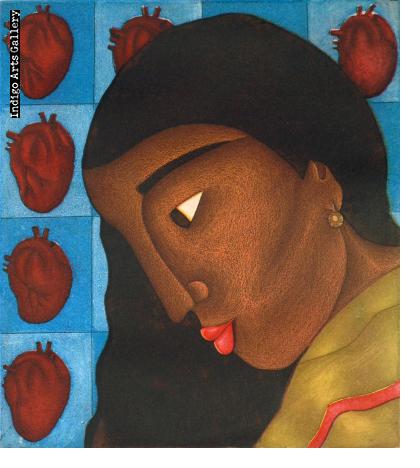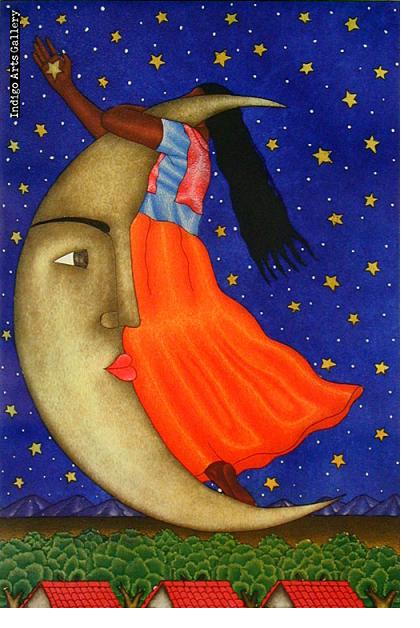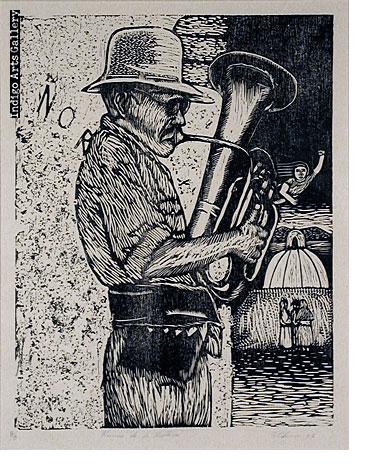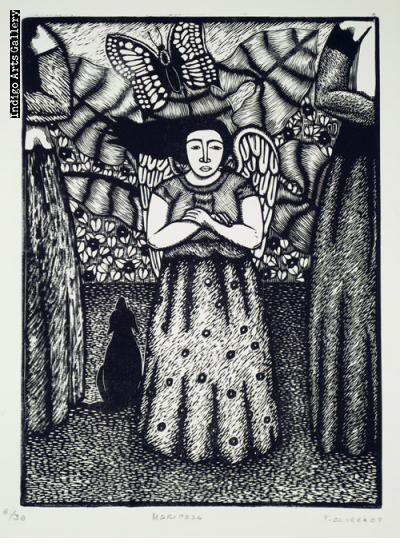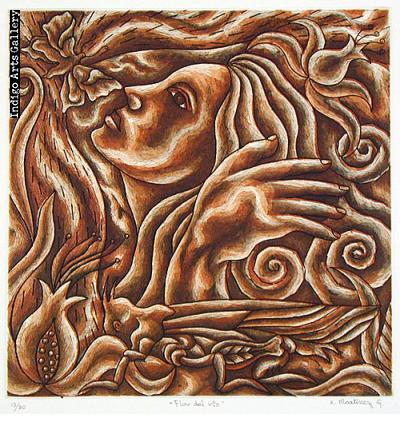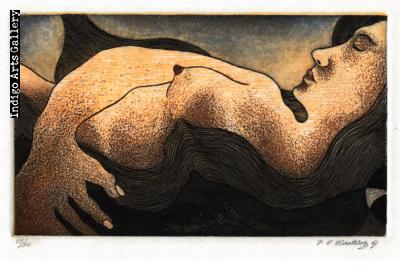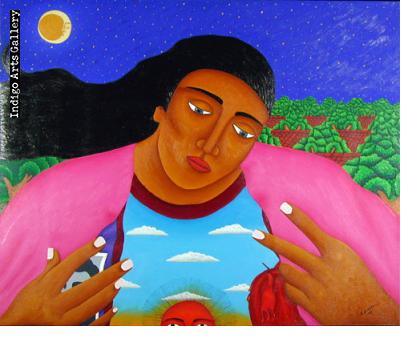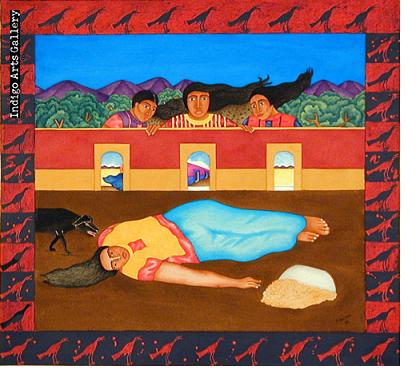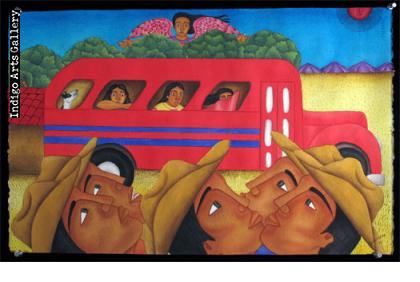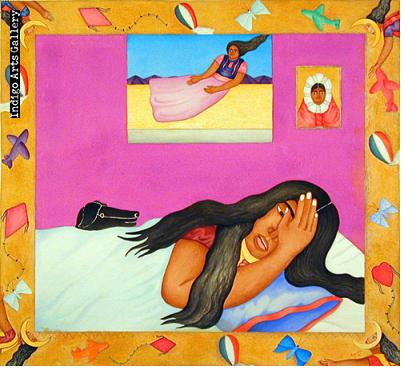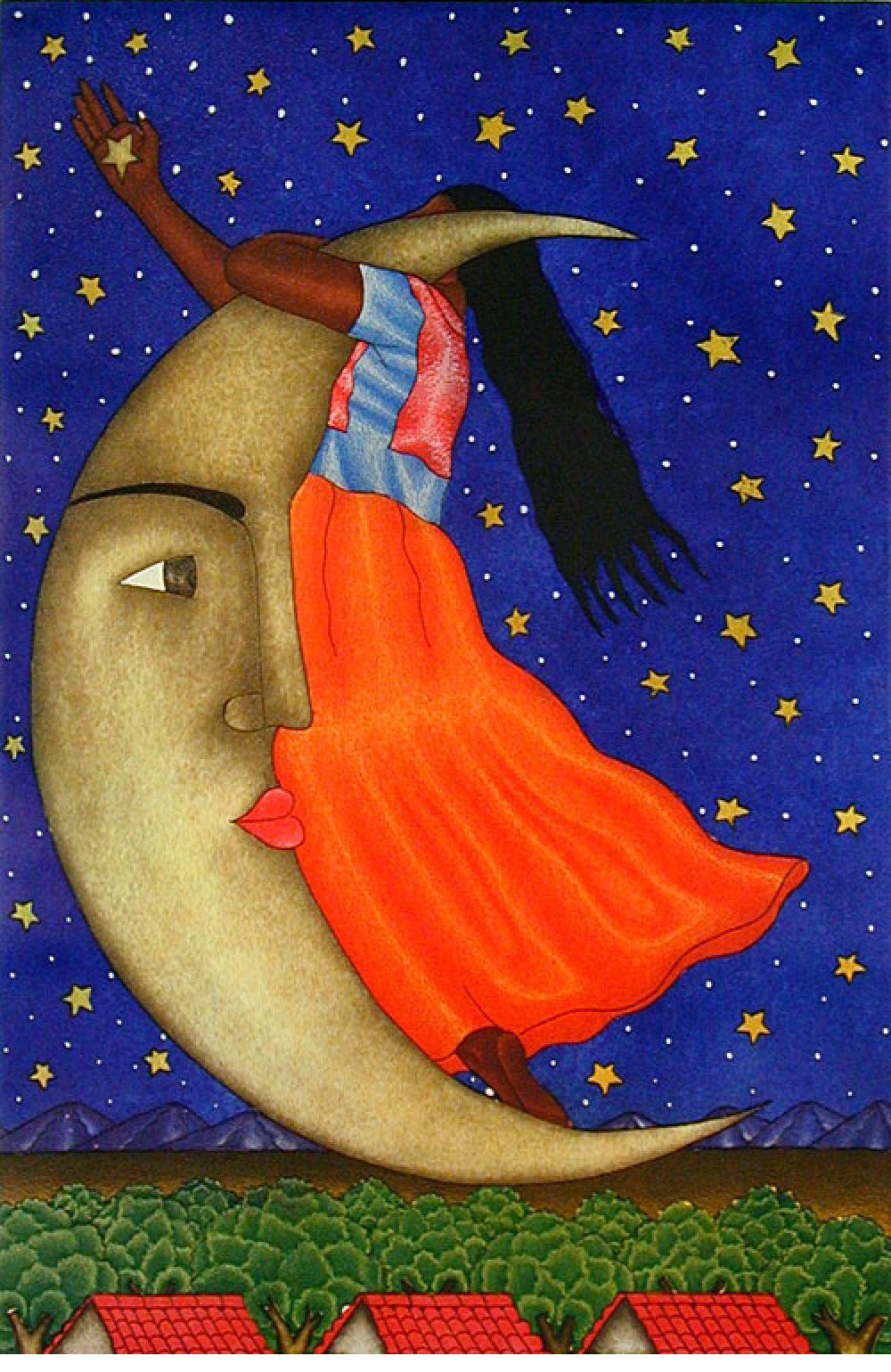
Prints and Paintings from Oaxaca, Mexico:
Modesto Bernardo, Enrique Flores, Abelardo Lopez, José Eddie Martinez, Leovigildo Martinez, Lorena Montes, Felipe Morales, Rodolfo Morales, Fernando Olivera, Filemon Santiago and others.
PHILADELPHIA - In twenty years of exhibiting the artists of Oaxaca, Mexico, the owners of Indigo Arts Gallery have seen Oaxaca grow into the most vibrant regional art center (giving Mexico City its due) in Mexico. The mountainous southern Mexico state of Oaxaca has long been known as a center for folk art production, including its famous black pottery, weavings, and carved wooden animals. Oaxaca has also produced three of the leading masters of 20th century Mexican art; Rufino Tamayo (who passed away in 1981), Rodolfo Morales (who passed away in 2001) and the still very active Francisco Toledo. But it is the vitality of the younger generation of Oaxaca artists inspired and nurtured by these masters, that has led critics in recent years to identify a distinct Oaxaca School of Mexican art. Oaxacan art draws its strength from native Indian culture, myths and legends. It is suffused with “magic realism” a folk surrealism in which people fly and mysterious juxtapositions are the norm. As poet Alberto Blanco has written, the artists of Oaxaca “all tend to depict one theme: the appearance in our history of another time and place. A space within another space. A time within another time.”
In De la Tierra de los Sueños / From the Land of Dreams, Indigo Arts presents prints and paintings by a variety of contemporary artists from Oaxaca. Though influenced by all their distinguished forebears, this group of artists owes its distinct vision particularly to Rodolfo Morales, (1925-2001) deemed the “Maestro de Los Sueños” (Master of Dreams) in last year’s retrospective at the Museo de Arte Contemporaneo de Monterrey. Indigo Arts presented a solo show of Maestro Morales’ work in 1997, and a memorial show in 2001.

